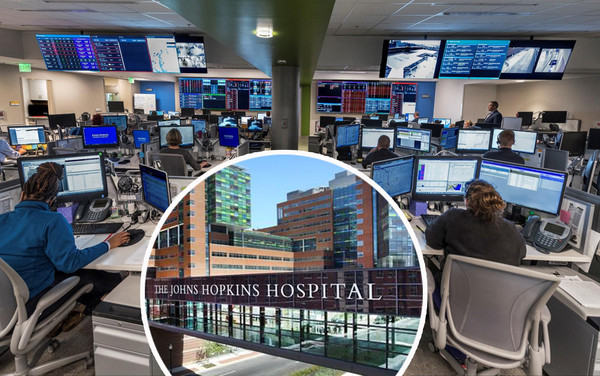The Johns Hopkins Hospital, known as one of the world's best hospitals, installed a system commonly seen in air traffic control towers five years ago.
The system greatly helps the hospital run as efficiently as possible, particularly in the Covid-19 pandemic situation, an executive at the hospital said.
The hospital’s “Healthcare Capacity Command Center” is up and running 24 hours a day. The command center identifies the status of medical resources within the hospital, predicts the number of patients, and sends out real-time information to medical staff so that the hospital can run most efficiently.

Jim Scheulen, chief administrative officer for emergency medicine and capacity management at Johns Hopkins, delivered a keynote speech on how healthcare will change after Covid-19 at the Korea Healthcare Congress (KHC) 2020, an online conference organized by the Korean Hospital Association on Thursday.
Scheulen said Johns Hopkins’ command center is a control tower that aims to increase its capacity.
Especially when the number of patients was spiking due to Covid-19, the command center helped raise hospital beds' operation rate and use medical sources efficiently, he emphasized.
The capacity command center improved hospital beds' operation rate from below 90 percent to 94 percent and the efficiency of resources, including medical manpower, he said.
When the number of patients surges, a hospital cannot maintain the best medical care environment, Scheulen said.
“In the past 10-15 years, experts have warned about the overcapacity of the healthcare industry and hospitals in the U.S. and many other countries, and many hospitals have closed,” he said. “This is because hospitals have failed to utilize beds enough to stay financially self-sufficient. The number of hospitals went down, and so did the number of beds.”
Hospitals cannot just increase beds just because they want to, he said. They should learn how to utilize beds and manage shrinking resources, he added.
Hospitals should consider not only efficiency but the quality of care, patient safety, treatment outcomes, and services, Scheulen went on to say.
“It is a very complicated work. To manage many things at the same time, we must think in a way different from that of the past,” he said.
Johns Hopkins came up with the idea of having “an air traffic control center for a hospital.” The hospital set up a separate team to manage capacity, too.
“The command center has a tremendous value because it tells us which beds are open for hospitalization and how many resources are available in which areas,” Scheulen said.
To operate the command center, Johns Hopkins worked together with GE Healthcare to develop a sophisticated simulation model, he added.
He tipped that it was important for a hospital’s governance and human resources to focus on managing healthcare capacity and utilize a command center.
After running the capacity command center, Johns Hopkins could reduce patients’ wait time for emergency room and surgery and admit more patients for treatment with the hospital's maximum efficiency, he said.
The command center was the heart of the Johns Hopkins Hospital and proved its value during the spread of Covid-19, Scheulen noted.
“We have been successful to some degree and will keep trying to raise capacity to the maximum level. We will also help more hospitals to introduce this system,” he added.

